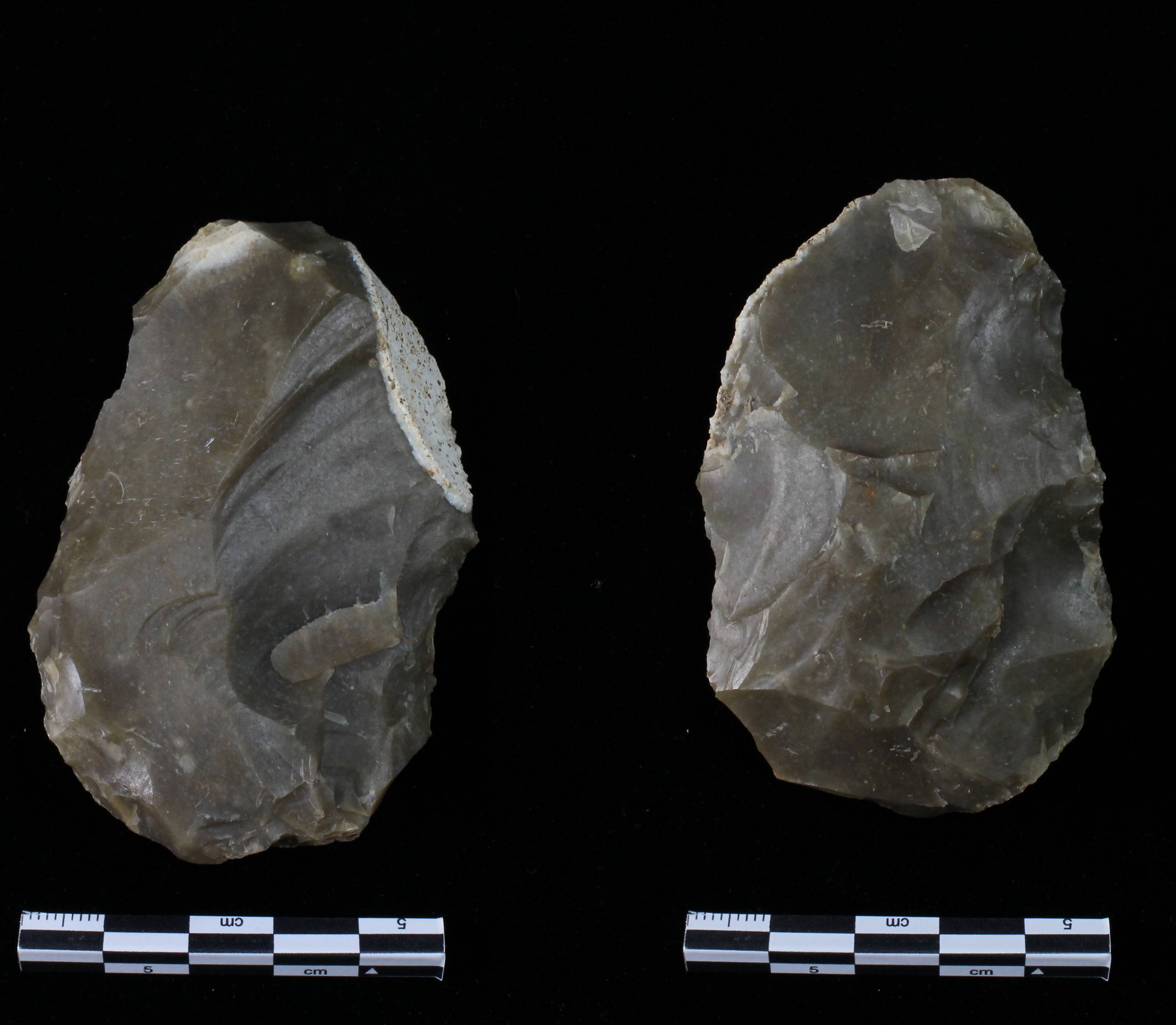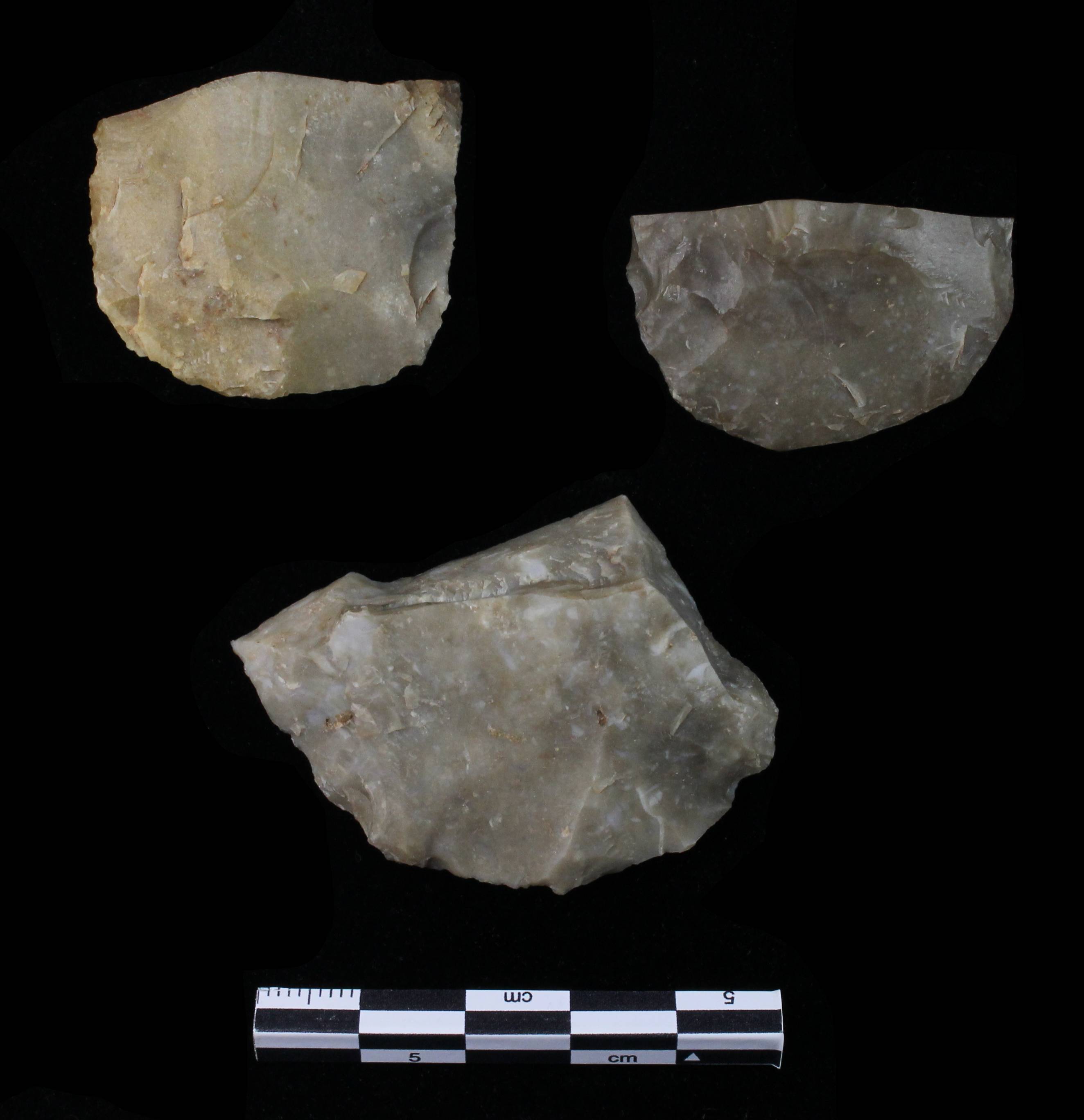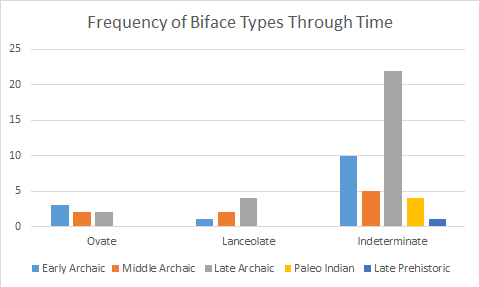Bifaces

In its most basic definition, a biface is a lithic (stone) artifact that has had flakes removed from both sides of the artifact. Although there are many kinds of bifacial artifacts, the word biface is also used to indicate a bifacially flaked artifact that may or may not have an obvious function. Bifacial stone tools such as drills or projectile points, for instance, are often given specific separate analysis apart from the more generic unhafted bifaces.
Bifaces and bifacial tools were produced in a variety of forms for a variety of functions. They are considered by many to be the multi-tool of the past. Some bifaces were used as knives for cutting a various materials like wood or bone, and some were used as scrapers for processing animal hides. Bifaces may also be classified as preforms, an intermediate type of biface form that can be used to create a number of different kinds of final biface types, including projectile points.
From core to final product, the lifespan of a biface is represented in the archaeological record, allowing analysts to not only study the technology behind their production but also patterns of use. Just like other categories of stone tools, bifaces were often discarded after breaking during use or during manufacture. There are also various ways a biface can break after it has been discarded. Therefore archaeological collections may contain large samples of biface fragments. Many characteristics, like the form and function of bifaces, can be determined from the surviving fragments.
This section describes the unhafted bifaces, a category of bifaces that do not have haft elements, including preforms, point tips and bifacial knives. The hafted biface category is described in the Projectile Point sectio n. A total of 244 bifaces and biface fragments recovered from the 2014 Spring Lake Data Recovery excavations. Of these, 56 (21.62%) were recovered from the established analytical units (AUs) and therefore included in the analysis presented here All bifaces from the AUs were sorted into one of four morphological categories: ovate (n=7), pointed ovate (n=_0), lanceolate (n=7) or indeterminate (n=42).
This classification scheme is intended to create a morphological typology for the bifaces recovered from our 2015 excavations. The focus of this analysis was to describe and tabulate the dimensions, form and fragmentation types of the sample of bifaces found in good contexts. Although this initial typological approach is not meant to infer function for any of these artifacts, it will create a standardized dataset that will be used as a framework for future studies. For example, these data can be incorporated into our larger database of bifaces from the Spring Lake site. This larger database is more appropriate for future studies involving detailed statistical analyses that could potentially quantify the variation within the different morphological categories, identify patterns of function and assess chronological changes.



Oval or Ovate bifaces are characterized by rounded edges and weak definition in shape to both the bottom (proximal) and top (distal) ends. Pointed ovate bifaces have a similar rounded shape to the oval bifaces, but they have a more defined distal tip.
Lanceolate bifaces have roughly parallel edges, squared to semi square bases and well-defined tips. In addition, lanceolate bifaces exhibit retouch or (re working), performed to shape and straighten edges.
The indeterminate category was used for incomplete artifacts lacking characteristics needed for classification. Incomplete bifaces were identified as corner fragments, medial (middle) fragments, end missing, end only (bottom or top) or edge fragment or edge missing. Complete artifacts were measured for length, width, and thickness in millimeters and weighed in grams. The smaller biface fragments were not measured.
Biface Analysis and Interpretations
In general, the production and use of bifaces over time at Spring Lake resulted in various forms, stages of manufacture and fracture types. While certain trends throughout time might be identifiable, this small sample size makes it difficult to say anything with certainty. As for the indeterminate category, all specimens are broken in such a way that the shape of the parent biface can no longer be determined. Thus, any apparent trends in this category are simply a result of repeat use or breakage throughout time. However, types of breakage can be studied in a way that could help quantify the bifaces that were broken during use in order to explore any correlations between usage breaks and biface use intensity. For example, if it was found that all of the indeterminate bifaces were indeed broken during use, it could by hypothesized that bifaces were used more intensively during the Late Archaic than any other time periods sampled during our excavations.


